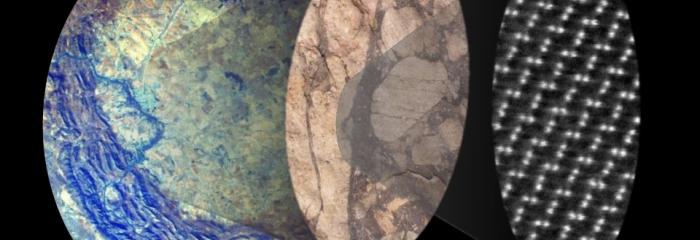When an asteroid meets a mineral: a fantastic dive into matter!

Scientists are trying to date (thanks to the U-Pb method) precisely the moments when asteroids have impacted the Earth. The idea is to link these impacts to possible environmental catastrophes that they would have initiated. To do this, we are looking for clues preserved in the rocks that were shocked during the impact on Earth. These clues are identifiable in the minerals on a very small scale (a few nanometers) and testify to the intense deformations that the material underwent during the impact.
To search for these clues, we take samples (rocks) from impact zones (in the study presented in this video it is the Vredefort crater in South Africa). These rocks are then prepared in different steps to be studied up to advanced techniques of transmission electron microscopy at very small scale (nanometer).
This video retraces all of these steps and takes us on a journey to the heart of the shocked mineral with a fantastic dive into its atoms! Find there images acquired with the NEO-ARM microscope!
https://www.youtube.com/watch?v=FOqUm05Cl_w
https://www.univ-st-etienne.fr/fr/csti/en-efferv-sciences/plongee-dans-l...
https://www.jeol.fr/category/actualites/
